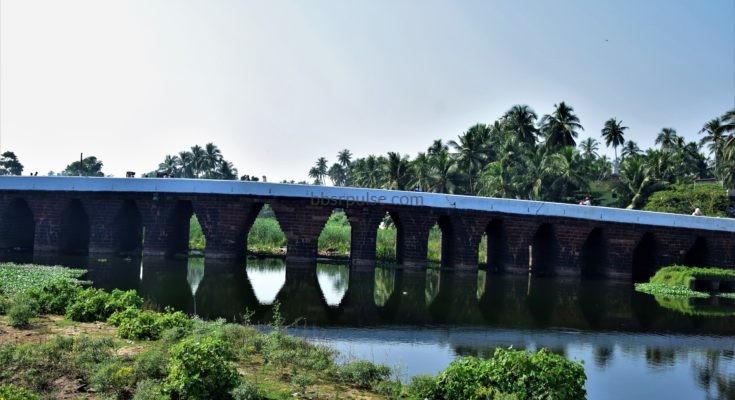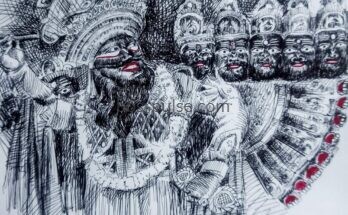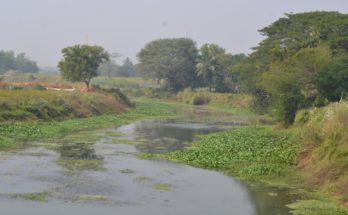Odisha has been blessed with big rivers, tributaries & numerous canals. Initially, there were makeshift bridges made of wood or bamboo, which were later on replaced by stone masonry. Many a times, the bridges had to face the wrath of nature via flood especially during monsoon. During British Raj permanent & strong bridges (with metals & mix) alongwith introduction of railways in Odisha (1892-98) were constructed across Odisha for communication, pilgrimage & safety of people after numerous flood, famine noticeably the 1866 Na’anka Durbhikhya (the Great Famine of Orissa). It’s the architecture and the heritage structure that often attracts the eyes of the onlookers. Some of the bridges are still in use while some have been lost into history or are abandoned. In terms of engineering, bridges can be categorised by design or type (beam, arch, truss, cantilever, suspension, or moveable), by length (usually expressed in terms of clear or overall span); and by material used (stone, wood, cast and wrought iron, concrete, steel etc).
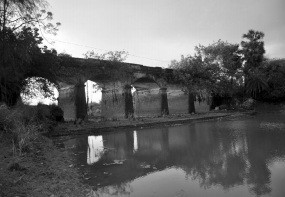
This article is more or less is a compilation of heritage bridges of Odisha & shall be published in two phases showcasing some of the architectural & engineering bridge structures of Odisha, at least constructed before independence. First phase will cover the stretch of Old Jagannath Sadak (OJS) from Baleswar district to Puri district. Here, its required to acknowledge the efforts of Indian Trust for Art & Cultural Heritage (INTACH), the pioneer organisation spearheading heritage awareness and conservation. The Jagannath Sadak was brought to notice by its Project Coordinator Shri Anil Dhir. He has successfully completed the documentation of projects like Jagannath Sadak & Prachi Valley as Project Head with Shri A.B Tripathy as Convenor, INTACH State Chapter, Odisha.
It’s this Old Jagannath Sadak route which has numerous heritage monuments including temples, muths, dharmasalas, bridges, tanks etc constructed majorly for pilgrims who were using the Old Jagannath Sadak route. And, the obvious reason for listing the good number of heritage bridges of this route in this article for its architectural marvel & heritage angle. The names used for the heritage bridges are quite interesting too. It’s a common practice to name a bridge after its main material used like Katha Pola (Wooden Bridge), Luha Pola (Iron Bridge), the locality name or even after the river or tributary’s name. Hence, there might be more than one bridges with same name used but in different areas. And, in local Odia parlance bridges is known as sankha, maybe due to the narrow passages like sankhi is for neck. Its other names are Pola, Nalla etc
Jaleswar Bridge, Bada Bazaar, Jaleswar (Baleswar)
Also known as Baramunha Pola, it was constructed in 1880 AD, its used as bridge over naala (Subarnarekha) on Old Jagannath Sadak road. It had replaced the old wooden bridge. Jaleswar is the first town on road after Kolkata on Old Jagannath Sadak. It’s a classic example of arched stone & masonry, brick & lime mortar. The five arched bridge had stood the test of time for more than 140 years, but recently has been demolished by Govt despite protest.
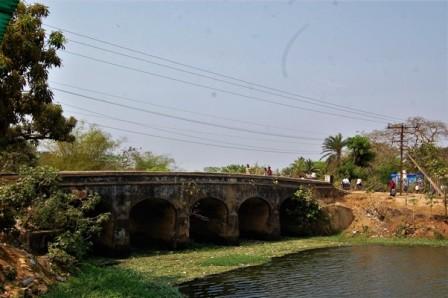
Gudikhal Bridge, Basta (Baleswar)
Also known as Palapala Pula, it was constructed in 1880 AD & now abandoned on Gudikhal dead river (distributaries of Subarnarekha River). Architectural style – iron & steel girder bridge resting on four piers & abutments at both the ends. Its decorative features are simple & plain bridge made of brick, stones, iron girders & mortar.
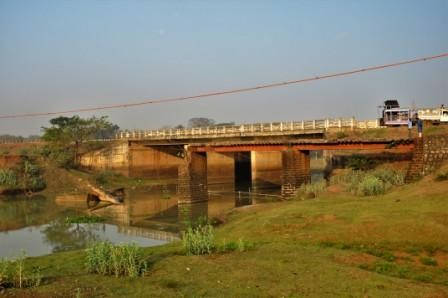
Munsif Nalla Bridge, Baharda village, Basta (Baleswar)
Also known as Handibhasa Nala Pola, it was constructed in 1890 over tributary of Jalaka river. It’s one of the earliest arch bridge on the Old Jagannath Sadak. Architectural plan – four arched bridge, made of bricks, stones, masonry (non-cement using jaggery lime etc).
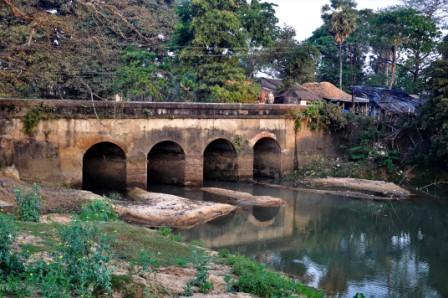
Jhinjhir Pola, Mathani village, Basta (Baleswar)
Constructed in 1905 by replacing an earlier wooden bridge on Jalaka river which is now abandoned, it’s the first suspension bridge in Eastern India, made on the lines of Hanging Bridge, Punalur (Kerala), designed by Scottish engineer Albert Henry in 1897 (based on original design by British engineer Brunel). Once the engineering marvel, today only the two piers on either end remains. The bridge was unstable & got washed away during a flash flood in 1928.
Mathani Bridge, Basta (Baleswar)
Constructed after Jhanjhir bridge in 1920 over Jalaka river, this arched bridge had six arches with five reinforced piers in the bridge. Architectural style – Simple basis design, made with bricks, stones & masonry (non-cement) & still in excellent condition.
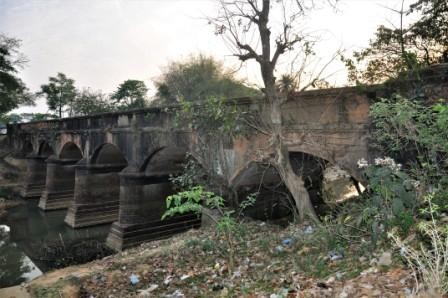
Budhabalanga Bridge, near Baleswar Town
Also known as Luha Pola, this bridge towards Phuladi Chowk was rebuilt in 1907 & is one of the longest bridge of Old Jagannath Sadak. It’s also one of the first iron girder bridge to be laid on Old Jagannath Sadak & the first in which the piers rest on two columns made of brick & masonry. The name means the old Balanga river rising from Similipal. It’s the fiercest flowing river of the entire stretch of Old Jagannath Sadak. Architectural style – Iron & steel girder resting on seven piers with abutments at both the ends, plain & functional design, made of brick, stone, iron girders, mortar, now declared unsafe.
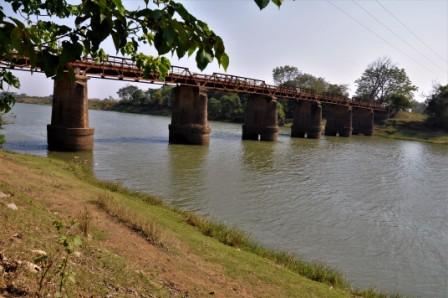
Nunia Jodi Bridge, Arda Bazaar (Baleswar)
This bridge towards Basta town on the backwaters of Budhabalanga was originally made between 1751-1803 AD during Maratha rule & restored in 1914, replacing the old wooden bridge. Architectural style – arch bridge with abutments at both the ends, piers made up of bricks & mortar, the 19 piers supports 20 arches. With nearly 150m across, it’s the longest bridge of Old Jagannath Sadak. There are signs of deterioration.
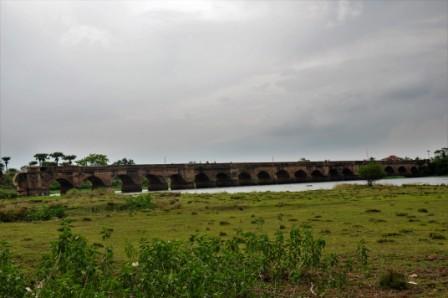
Piltakalia Bridge, Kasaba village, Soro (Baleswar)
This bridge on Pitakali river, 50m from Kansabansa bridge was made by replacing the Marathas wooden bridge of 1790, It was an important & its construction was quite unique since it was the only curving bridge on the road. Ghodamara (ଘୋଡାମରା ) Padia is the landmark near the bridge, notorious for thugs attack for which Lord William Bentinck had appointed the Khandayats & others to safeguard the pilgrims. Architectural style – typical arched bridge having five arches with solid abutments at both the ends. Made of bricks, stones & masonry (non-cement) . It’s now showing signs of deterioration.
Kansabansa Bridge, Kasaba village, Soro (Baleswar)
This bridge was made on river Kansabansa in 1890 which is named due to abundance of kaincha (black n red seed) & baunsha (bamboo) in the course. Typical arched bridge, a six arched bridge with solid abutments on both the ends. Architectural style – Two black chlorite grills are embedded in the middle of the bridge on both the side walls, carved out of single block of stone made of bricks, stones & masonry (non-cement).

Badagadia bridge, Bedapur village, Simulia (Baleswar)
This bridge over Badagadia River was made in 1890 & is one of the early arch bridges on the Old jagannath Sadak. There was an old wooden bridge which was replaced after the great famine of 1866. There are three back to back bridges on the stretch, quite near to each other. Architectural style – a four arched bridge with solid abutments at both the ends, made of bricks, stone, masonry.
Salandi Bridge, Astal (Bhadrak)
The span bridge made on Salandi River in 1869 is on the main street connecting Kutchery road with highway, has now been abandoned. The present bridge is built by Burn & Co. (Calcutta) in 1916. Burn & Co was set up in 1781& it was the only company during British Raj that builds bridges & laid railway tracks across India. Architectural style – 70m long Iron & steel girder bridge resting on three piers with abutments is a box girder bridge with four Howe Trusses, made with brick, stones, iron girders & mortar. It’s in the advanced state of decay.
Majhinala Bridge, Balipokhari village, Akhuapada (Bhadrak)
Also known as Sankha Pola, it was made in 1890 & is an important bridge over Baitarani (the holiest river in Odisha after Prachi). It’s the highest bridge on Old Jagannath Sadak connecting Bhadrak with Jajpur which is considered as the holiest spot on Old Jagannath Sadak excluding Puri. It has been abandoned since 1965 but has remained in its original state. It’s a classic example of an arch bridge, its on a small oxbow channel of Baitarani, called Majhinala, five arches with four reinforced piers, two abutments at both the ends. The bridge is constructed with hard baked kiln bricks & lime mortar. It’s in advance state of decay & neglected since 30 years.
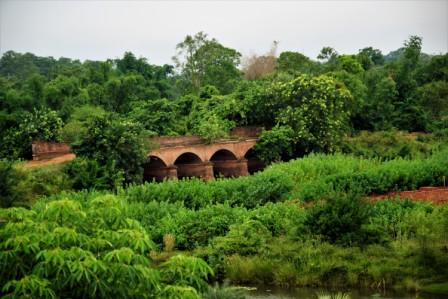
Atharanala Bridge, Siriapur, near Jajpur Town
Also known as Tentulimala Bridge, this arched bridge was made by Kalingan king in 16th century before Moghul’s conquest, over the Mandakini river (from Baitarani). But since its also known as Marahatta Bridge, it’s likely that it was built by the Marathas. It’s one of the oldest bridges of Old Jagannath Sadak & is still in use. It’s a landmark of Old Jagannath Sadak which has survived five centuries. It’s similar to Ataranala Bridge (Puri) & Gangua Marahatta Bridge (Bhubaneswar), also known as Atharanala Bridge (eighteen passages). It’s made of khandolite, sandstone & laterite in medieval architectural scheme of pillars & arches. Even though, the bridge is named Atharanala, it has only 11 arches & 7 piers (totaling 18). Like Puri, some of the stone blocks have animals & human figured carved which is quite unique & can be noticed on closer look. Abutments are made of laterite stone blocks whereas the central portion & piers are made of sandstone & granite. The sheer solid construction has made the Atharanala bridge practically indestructible & is still intact even now. The heritage bridge is almost at ground level now & to safeguard it for posterity, a new bridge is being constructed now, parallel to it.

Baruan Bridge, Baruna Chowk (Jajpur)
Also known as Uneisia Bridge, this fully brick bridge was made in 1880 AD on Dudhie stream of Brahmani river connecting Jajpur with Kuakhia town. This simple arch bridge is the fourth longest bridge of Old Jagannath Sadak. It’s still a better preserved bridge & is a replica of the Khanditaar Bridge. The bridge has 18 arches & 19 piers, hence Unesia name. It’s made of brick & lime masonry with plaster coated on the entire bridge surface.
Khanditar Bridge, Khanditaar Sahi, Kuakhia town (Jajpur)
It’s the 3rd longest bridge on the Old Jagannath Sadak connecting Khanditar Ghat with Kuakhia, Jajpur. It was an important military encampment both for Marathas & Britishers. The 240X18 ft bridge is still in good condition with firmly angled abutments, but abandoned. It’s a neat brick masonry with arches & keystones of a classical pattern made by using hard baked kiln bricks & lime mortar.
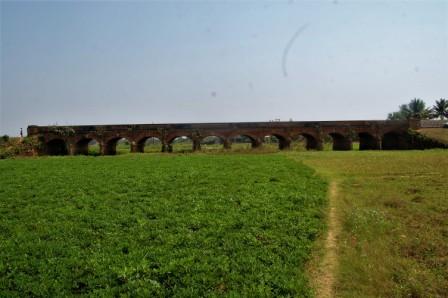
Galguli Bridge, near Langudi, (Jajpur)
This bridge made in 1400 AD over the defunct Sagadia Nala (Bullock cart pliers) is quite similar to Atharanala bridge of Puri. It reminds us of the ancient connection between Biraja Pitha (Jajpur) & Jagannath Pitha (Puri). There are three round chakas (pedestals for the Gods) remnants which would have definitely been meant for the triads. Local folklore says that Jagannath & his sister Biraja parted ways here. Jagannath went forth to Puri wheras Biraja resided at Jajpur town. The curious name Galugali has too an interesting legend to say. It’s said that while parting ways, Biraja asked Jagannath – Galu ଗଲୁ (‘Did you go’ in Odia) to which Jagannath answered as Gali ଗଲି (‘Yes Going’ in Odia), hence Galugali 🙂
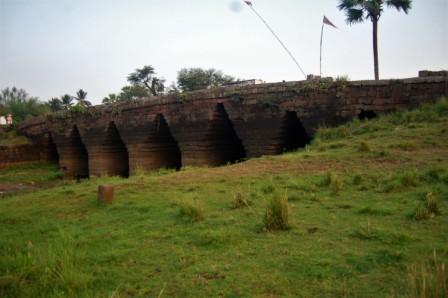
Sarei Bridge, Sundaria, Haridaspur (Jajpur)
Also known as Chudakhia Pola, this old span bridge at Sarei Chowk was originally made in 1875 over Nua Nae River (mixed with Baitarani). The nearby village is Chudakhia (flattened rice eater) & falls under Old Jagannath Sadak connecting Dharmasala with Haridaspur (near Chandikhol). It’s a practice of the pilgrims to camp under tall trees & consume the dry ration they carried & that’s how the name Chudakhia was made. The bridge has four piers with abutments on both the ends. The bridge was re-strengthened in 1955 with Iron girders reinforced under the road surface to increase the load carrying capacity. It’s made up of laterite stone blocks from nearby hills with lime mortars. Although abandoned, the bridge is still in use.

Heritage Bridges in Millennium City Cuttack:
A. Taladandi Bridge, Nua Bazaar, Cuttack City
Made over the Taladanda Canal by the Britishers after the Mahanadi Barrage was constructed post Na’anka Durbhikhya of 1866, it’s said to have been used for navigation into Cuttack city both by travelers & merchants who were transporting their trading stocks to & from Malgodown. Although, a parallel bridge has been made near to it, still the heritage bridge is in good state & a treat to watch in the early winter mornings.
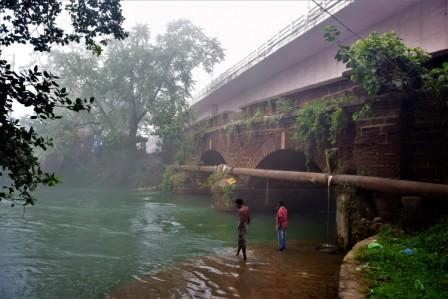
B. Bridge at Chhatra Bazar, Cuttack City

C. Ranihat Bridge, Cuttack City
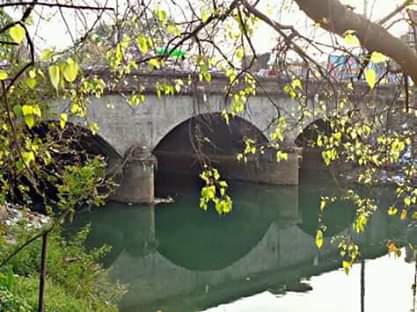
Kalighai Bridge, Adaspur-Niali route (Cuttack)
Also known as Kaliaghai & Atharanala Pola (once more), it was constructed in & around 1870 on river Kaliaghai, a rivulet flowing from the holy river Prachi. It’s just by the right side of the present Phulnakhara – Niali Road at Adaspur. It was the first and only surviving old bridge of the road in the entire Cuttack to Astaranga stretch. It had great cultural significance as this was the road to Puri and Konark for pilgrims. Architectural Style -21 arched brick, stone and mortar bridge with arches made of dressed laterite stone blocks. It’s now an abandoned bridge, yet has historic significance & in spite of being abandoned due to its low height, the bridge is still strong and usable. There is another British Age bridge at Tribeni Ghat, if one takes right side from Adaspur.
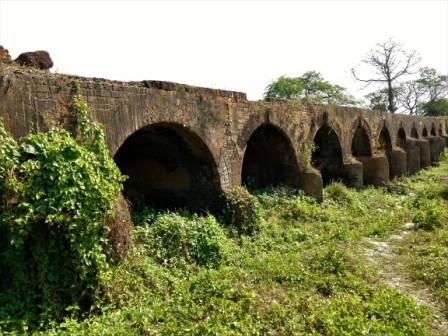
Atharanala Bridge, Pandra (Bhubaneswar)
Also known as Marahatta Bridge, this heritage bridge at Pandra on Gangua canal was originally made by the Marathas for the pilgrims on the Old Jagannath Sadak. It’s presently on the starting point of new by-pass road connecting Palasuni in Bhubaneswar with Daya Bridge near Uttara square. It’s made of laterite stone with dry masonry. There were chances of it being demolished for new road construction, thanks to the protest by the locals; it has now been spared as a heritage structure. It’s an abandoned bridge, but needs restoration & protection from the drainage water flowing through it.
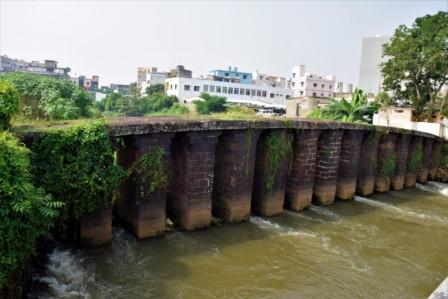
Bada Gangua Bridge, near Megheswar Temple (Bhubaneswar)
The Bada Gangua Bridge is located near the Megheswar Temple-By Pass crossing at Bhubaneswar. The bridge has almost collapsed, only one end is visible. It’s made of laterite stone with dry masonry. Locals are not aware of the antiquity of the bridges because there has been rarely any study on the bridge in ruins. But since it’s an old structure, it needs to be conserved as part of the heritage. Historians said the bridge could have been built by the Maratha rulers, who ruled the state for a brief period before the British which denotes that it belongs to 18th century. similarly, there is another Sana Gangua Bridge near Samantaraypur Road in same state of affairs.

British Bridge at Delanga, Puri district
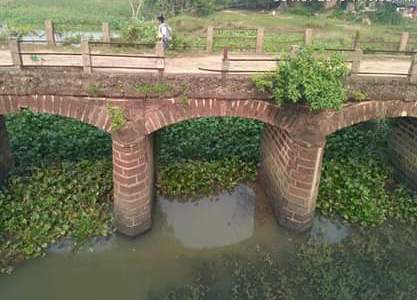
Chandanpur’s collapsed bridge on Bhargabi River
Kathapola Bridge, near Malatipatapur, Puri
Its near the newly made Bus Stand at Malatipatapur, Puri. As the name suggests, it was originally a wooden bridge (katha pola), which was later on upgraded to laterite bridge by the Britishers. Locals say that the ghat nearby was used for transportation of logwood for Jagannath rath making at Puri. The woods were originally being transported via water route from Nayagarh-Daspalla forest to Kathapola ghat from where the Gajapati’s royal elephants were carrying away the logs till Bada Danda’s (Grand Road) ratha khala (rath making site). It’s made of laterite stone with dry masonry.
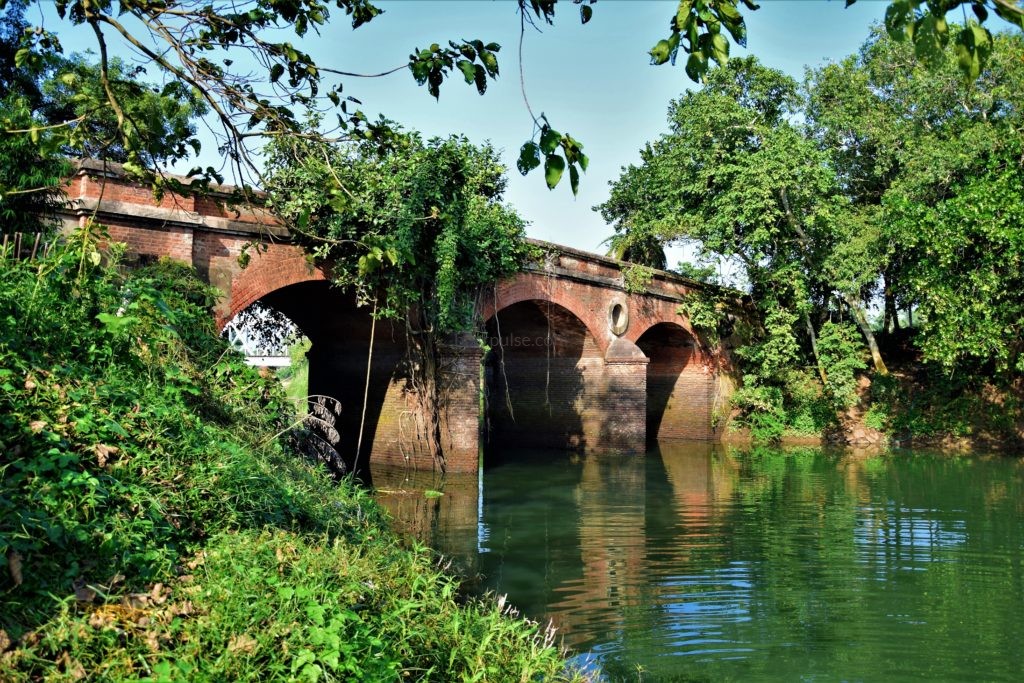
Atharnala Bridge, Puri
Among all the bridges with Atharanala name, this is the grandest & most revered bridge since it’s the gateway to the holy town of Lord Jagannath. It’s also known as Hulihulia bridge, made on the ancient Musa river by the Marathas in the 2nd half of 18th century. It’s built in ashlar masonry with laterite stone & lime mortar in medieval architectural style of pillars & arches with 19 spans & 18 abutments. As the name suggests, the bridge is named Atharanala since it has eighteen passages. On close inspection, some of the stone blocks have animals & human murals like udyotasingha & makarapranala. Abutments are made of laterite stone blocks whereas the central portion & piers are made of sandstone & granite. The sheer solid construction has made the Atharanala Bridge quite strong & still in use although heavy vehicular traffic are not allowed to pass through it. However, growth of vegetation & water pollution needs to be checked by making beautification of the area.

One interesting bridge needs to be mentioned here. Here, we came across at least four bridges with Atharanala name due to their similar architectural pattern. There’s one more bridge in far away Cambodia country which is similar to our own Atharanala bridge. The Phra Phutthos (12th century) bridge, Kompong Kdei vicinity of Cambodia was constructed at the end of the 12th century during the reign of Jayavarman VII (1181-1218). He is considered the most powerful of the Khmer monarchs by historians. With more than twenty narrow arches spanning 246ft (75m), this is the longest corbeled stone-arch bridge in the world. It resembles our own Atharanala bridge(s) of Odisha.
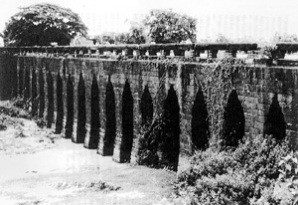
Even though some bridges mentioned here are not exactly on Old Jagannath Sadak route, still it has been added here since it’s of great heritage importance & for its architectural marvel. Some heritage bridges en route might have been missed out. Readers are requested to provide value additions with info & images. Similarly, there were certain bridges which were there but no more available now, some were demolished while some crumbled down with age like the Saradeipur’s Bhargabi Bridge which collapsed. The second phase of this heritage bridges covering the rest of part Odisha alongwith the New Jagannath Sadak (NJS) route connecting Puri with Nayagarh.
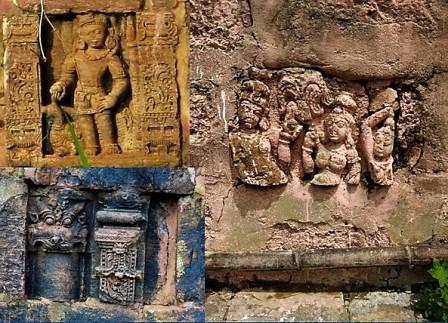
(C) 2019 All Rights Reserved
Source: Monuments of the Old Jagannath Sadak (Vol II) by INTACH
Images: Taranisen Pattnaik, Anil Dhir, Deepak Nayak & Biswajit Parida
Ref: www.ignca.gov.in, www.icomos.org
With additional inputs by historian Shri Anil Dhir

